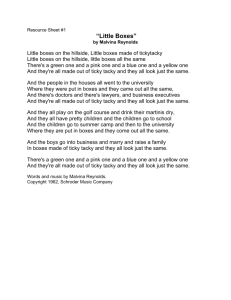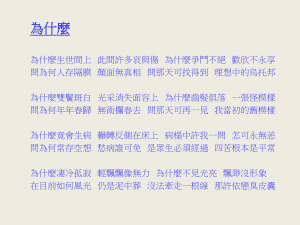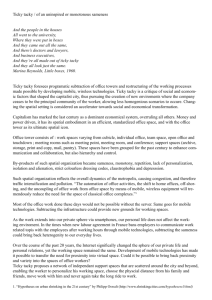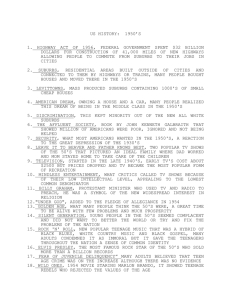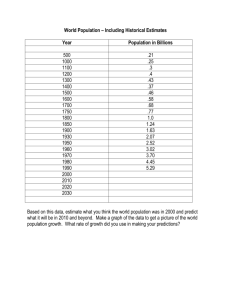File - MHS CP10 Social Studies
advertisement
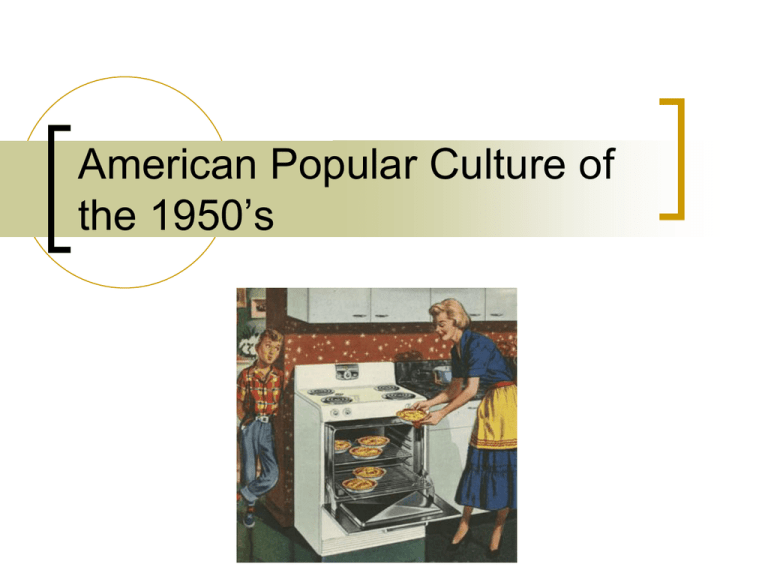
American Popular Culture of the 1950’s Truman’s “Fair Deal” The Idealized 1950’s "Every segment of our population, and every individual, has a right to expect from his government a fair deal." Near 0% unemployment Corporate income and dividends more than doubled No bank closures in almost nine years Minimum wage increased from .40 to .75 cents Social Security benefits doubled Truman’s “Fair Deal” The Idealized 1950’s Civil Rights – Desegregated the armed forces, mandated that all federal contracts be offered equally, and equal housing opportunities to all Truman’s “Fair Deal” The Idealized 1950’s Health and Welfare – mandated health and dental benefits offered by federal employers, water pollution solutions, major hospital construction and modernization, and research grants for mental illness treatments Truman’s “Fair Deal” The Idealized 1950’s Labor and Education – raise in minimum wage, fair labor standards, vocational education opportunities expanded, long term low interest school loans offered, school lunch programs expanded The GI Bill Introduced after World War II and expanded after the Korean War Provided veterans with medical care for war injuries, money towards college or vocational training schools, low interest home loans, and unemployment benefits immediately following the war for up to one year After the gloom of WWII and the Great Depression, Americans used the economic boost of the war to build new technologies and to enjoy the comforts of home and recreation once again The “Good Life” of the 1950’s The Suburbs - Levittowns With growing families and increased income, families moved out of the cities and into the surrounding suburbs Levitt pioneered the idea of mass producing affordable homes and planned communities Baby-Boomer Generation During the Depression, the birthrate was around 19 per 1,000 After the war, with an improved economy and outlook, the birthrate jumped to 25 per 1,000 Automobiles and Highways With more families living further from work, the Interstate Highway Act provided $33 billion to create interstate highways, connecting the suburbs with the cities More highways and longer commutes led to an explosion in the automobile industry and related roadside industries Auto Sales and Garages Roadside Attractions Hotels and Motels Safety Features Resort Destinations Fast Food Television Viewership and Profits Between 1949 and 1969, the number of households in the U.S. with at least one TV set rose from less than a million to 44 million. The number of TV stations rose from 69 to 566. The amount advertisers paid these TV stations and the networks rose from $58 million to $1.5 billion. Popular Shows of the 1950’s I Love Lucy The Lone Ranger Leave It To Beaver Jack Benny Perry Como Ozzie and Harriet The Honeymooners Superman Bonanza The Price is Right Dragnet Tarzan Andy Griffith Milton Berle Three Stooges Beverly Hillbillies Mickey Mouse Gunsmoke Lassie The Evening News The Computer UNIVAC: a device, which contained 20,000 vacuum tubes, occupied 1,500 square feet and weighed 40 tons; The Computer, 2000? Scientists from the Rand Corporation created this model to illustrate how a "home computer" could look in the year 2000. Nuclear Power Heat from controlled fission could be used to create steam, which in turn could be used to drive electrical turbines Disney’s “Our Friend The Atom” Medical Advances 1954 – Polio Vaccine (Salk, Thomas) 1950’s – Conformity v. Rebellion Conformity and conservatism promoted harmony and compromise. Individuality promoted rebellion and conflict. Post-war America craved peace and fulfillment. Little boxes on the hillside, Little boxes made of ticky tacky,1 Little boxes on the hillside, Little boxes all the same. There's a green one and a pink one And a blue one and a yellow one, And they're all made out of ticky tacky And they all look just the same. And the people in the houses All went to the university, Where they were put in boxes And they came out all the same, And there's doctors and lawyers, And business executives, And they're all made out of ticky tacky And they all look just the same. And they all play on the golf course And drink their martinis dry, And they all have pretty children And the children go to school, And the children go to summer camp And then to the university, Where they are put in boxes And they come out all the same. And the boys go into business And marry and raise a family In boxes made of ticky tacky And they all look just the same. There's a green one and a pink one And a blue one and a yellow one, And they're all made out of ticky tacky And they all look just the same. Perry v. Elvis One-Piece v. Bikini Lettermen v. Beatnik Homemaker v. Work
